

| Bumblebees and Cuckoo Bees in Nottinghamshire | ||
| .......... |
| Bumblebees are known to
everyone and the various species' make up one of the most
familiar group of insects. Whilst some bees are solitary,
Bumblebees are social insects, forming small colonies
during the Spring and Summer months. Unlike some other bees which nest above ground, most Bumblebees formed their nests at (or below) ground level. That was until the arrival of the now extremely familiar Bombus hypnorum, often regularly referred to as the Tree-nesting Bumblebee, yet more likely to utilise a nest box or roof space. Also featured are three Cuckoo Bees (formerly Psithyrus sp), which are cleptoparasites of two of our most familiar Bumblebee species. |
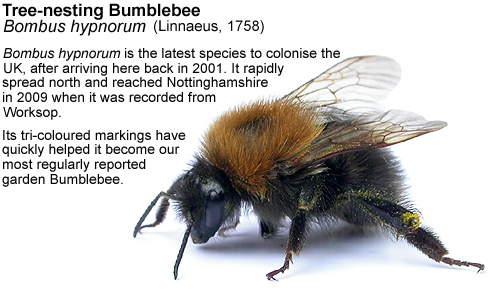 |
|
| .......... | ||
| Brief
life history There are three castes within the colony - queen (fertile female) drone (male) and worker (infertile female). After pairing in the late Summer and Autumn, only the young queens survive through the Winter to start new colonies the following Spring. In more recent years, there has developed an increasing trend for new colonies to be started by the queens of some species, the same Autumn after pairing. Both Queens and workers are now sometimes recorded during mild Winter days in the south-west UK, but Winter records in Nottinghamshire, still seem few. It seems that a favourite nectar source at this time of year are the flowers of Mahonia and Winter flowering Heathers. Nests are typically rather small, but colonies can number several hundred workers towards the end of the Summer. Nest sites vary between species, but old mice nests below ground and within grass tussocks are favourite locations. The nest cells are clumped together, rather than the more architecturally constructed nests and cells of Wasps. |
||
| .......... | ||
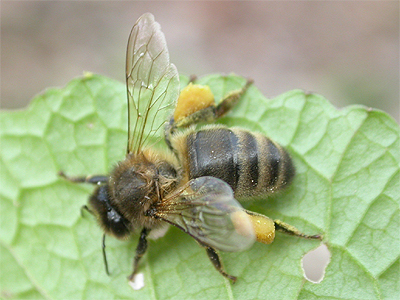 |
The Honey Bee (Apis
mellifera) confusion The familiar Honey Bee should be well known to most people and there should be no confusion in the identification of any Bumblebee with the Honey Bee - yet it does occur. It seems that a complete lack of awareness or understanding among the public, regarding size, shape and colour differences between the two, is to blame. The recent arrival and subsequent spread of Bombus hypnorum (the Tree-nesting Bumblebee) in the UK, has led to a dramatic increase in local Beekeepers being called out to deal with swarms of bees, only to find that the majority of swarms involve Bombus hypnorum nests. 95% of all cases of swarming bees reported by the public, actually relate to Bumblebees, so please check carefully before calling in your local Beekeeping Association. |
|
| .......... | ||
| Cuckoo
Bees Cuckoo Bees previously had the scientific name Psithyrus, but now come under Bombus. They are so called because of their habit of finding a nest of their host species and infiltrating it. Cuckoo Bees have no worker caste, only males (Drones) in late Summer and Autumn and females (queens) which are most frequently seen in Spring. |
||
| .......... | ||
|
Only the
young Cuckoo Bee queens over-winter and emerge later than
their hosts the following Spring, to take over a nest of
their host species. The existing queen is usually killed
and the Cuckoo Bee queen takes over the colony and
produces her own eggs, which the existing workers tend,
till new male and female Cuckoo Bees emerge during the
Summer months. Identification of some species is extremely difficult by photographs. Several species are supposedly common across much of the UK. Bumble/Cuckoo Bee identification Bumblebee identification is quite difficult. The more photographs you take, or the more Bumblebees you look at - the more variation between adults of the same species you see. However, the species' shown on this page are all common throughout the lowlands of the UK and whilst some similar species can only be separated by careful examination, most are relatively straight forward and we have included some of the key identification features for each species. 1. One of the key features of Cuckoo Bees, is the complete absence of pollen baskets. On normal Bumble Bees, the hind tibia is completely bare and shiny (see right hand photograph) whilst the tibia of all Cuckoo Bees are hairy. 2. Single orange or yellow band on thorax and with no other large orange or yellow band on the abdomen, is distinctive of some Cuckoo Bee species. 3. Single thin yellow/orange band or patches on abdomen, as in the Cuckoo Bees B. bohemicus and B. vestalis, compared to B. hortorum on the right. |
|||||||||||||||||||||||||
| Garden
Bumblebee Bombus
hortorum
(Linnaeus,
1761) |
|||||
|
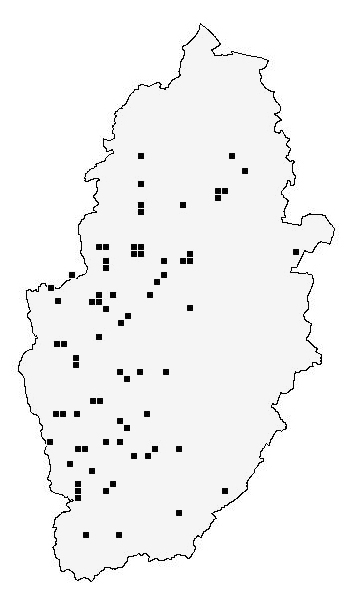 |
||||
| Red-tailed
Bumblebee Bombus
lapidarius (Linnaeus, 1758) |
|||||
|
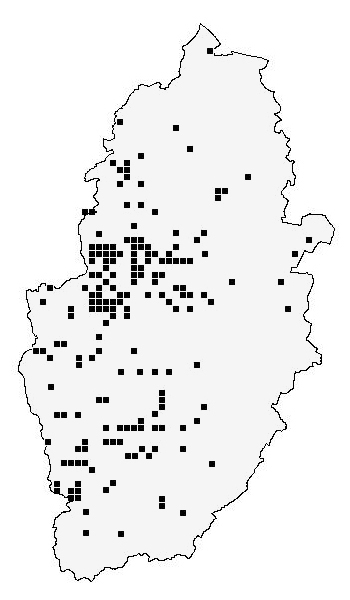 |
||||
| White-tailed
Bumblebee Bombus
lucorum
sensu
lato |
|||||
|
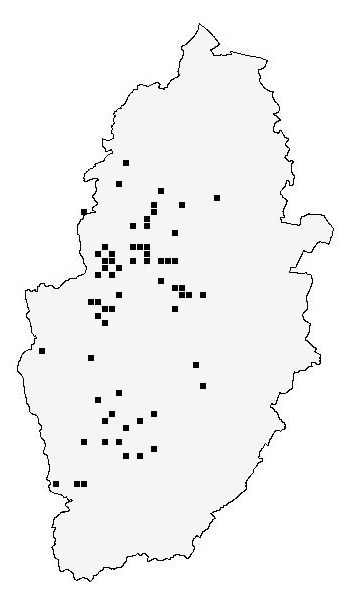 |
||||
| Common
Carder Bumblebee Bombus pascuorum (Scopoli,
1763) |
|||||
|
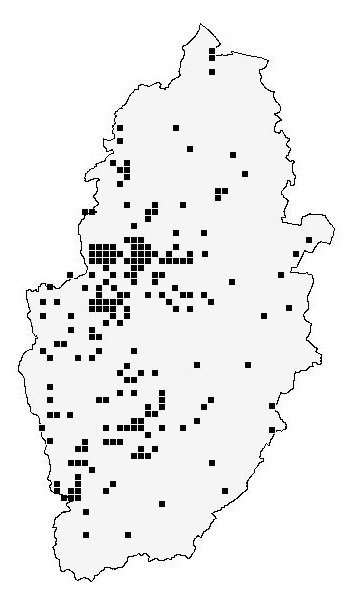 |
||||
| Tree
Bumblebee Bombus
hypnorum (Linnaeus, 1758) |
|||||
|
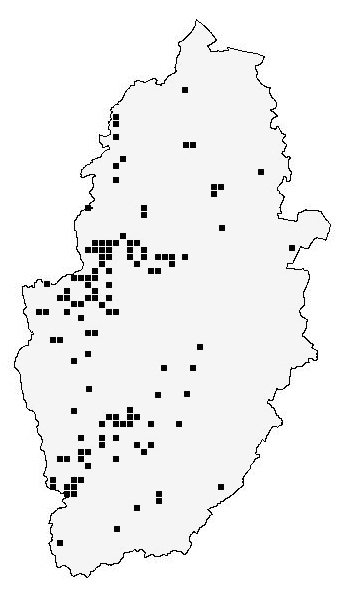 |
||||
| Early
Nesting Bumblebee Bombus pratorum (Linnaeus, 1761) |
|||||
|
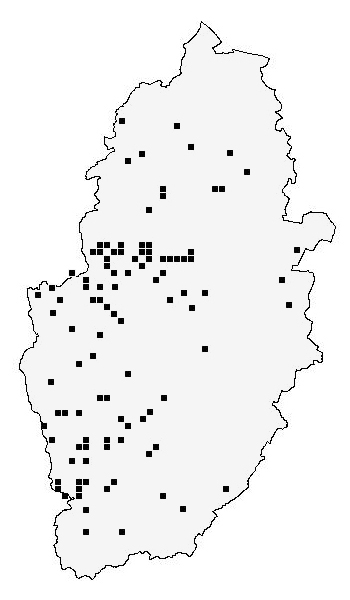 |
||||
| Buff-tailed
Bumblebee Bombus
terrestris (Linnaeus, 1758) |
|||||
|
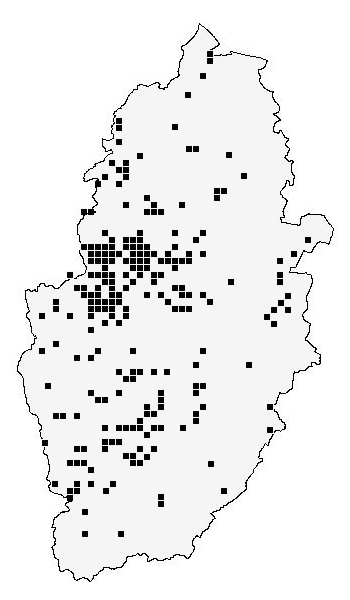 |
||||
| Barbut's
Bumblebee Bombus
barbutellus (Kirby, 1802) |
|||||
|
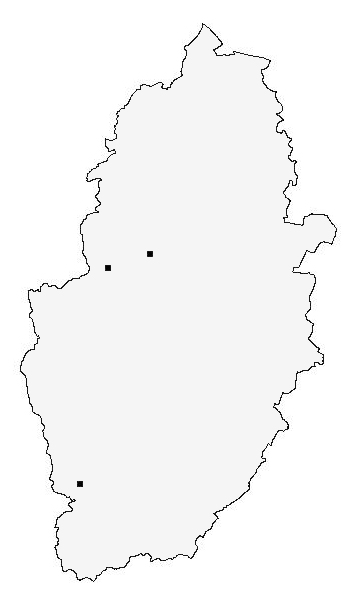 |
||||
| Bombus
bohemicus (Seidl, 1837) |
|||||
|
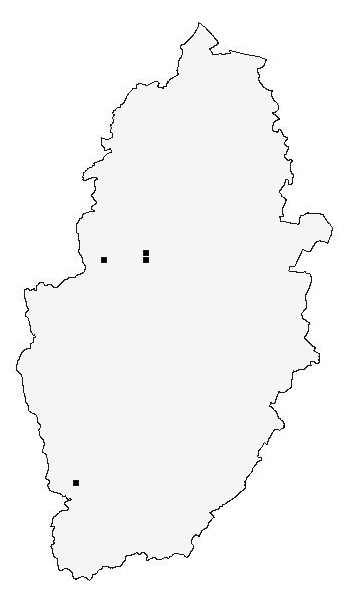 |
||||
| Bombus
rupestris (Fabricius, 1793) |
|||||
|
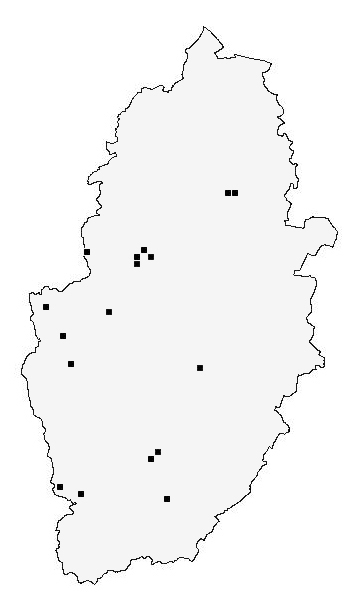 |
||||
| Bombus
vestalis (Geoffroy
in Fourcroy, 1785) |
|||||
|
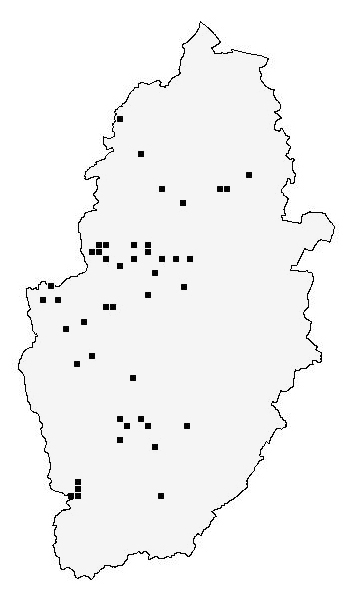 |
||||